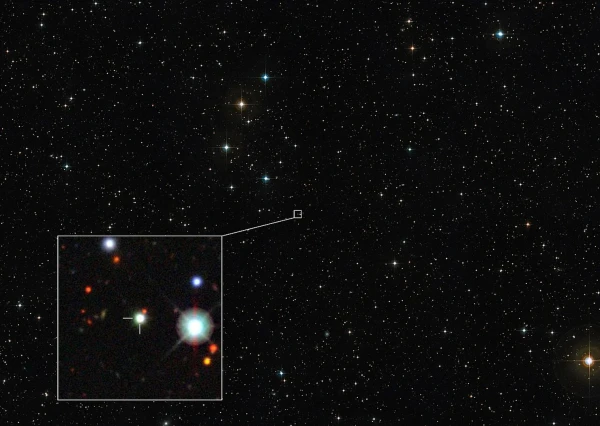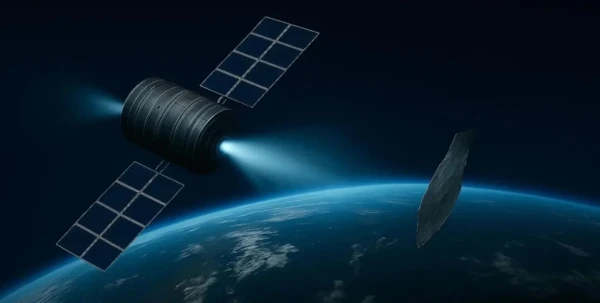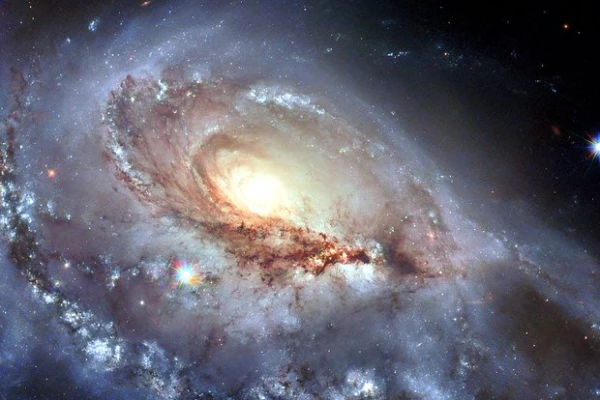
The new study refutes the initial mass estimate of the brightest quasar in the known Universe. The new mass value is still impressive.
The quasar J0529-4351 was discovered in 2024, and astronomers found that it is the brightest such object among all known in the Universe. This quasar is about 500 trillion times brighter than the Sun. Previous estimates showed that the mass of this object, which is actually a supermassive black hole, is 10 billion times greater than that of the Sun. A new study published on the preprint server arXiv shows that the mass of the quasar is still enormous, but it is 800 million times greater than the mass of our star, writes ScienceAlert.
When supermassive black holes actively absorb surrounding gas and dust, an accretion disk of very hot plasma forms around them. This disk can emit a lot of radiation, and thus the black hole becomes a quasar. Such objects are so bright that they can outshine all the stars in the galaxy where the black hole is located with their radiation.
After the quasar J0529-4351 was discovered at a distance of 12.5 billion light-years from us, astronomers determined that it is the brightest such object among all known. At the same time, calculations showed that the mass of the quasar is 10 billion times greater than that of the Sun.
Astronomers previously calculated this mass by multiplying the square of the orbital speed of the accretion disk surrounding the black hole by the distance to the black hole. Scientists assumed that they could measure the orbital speed of the accretion disk by measuring the width of its emission lines. This is a spectral signal coming from the light emitted by the hot plasma in the accretion disk.
The calculation of the orbital speed of the disk was based on the fundamental assumption that the wider the emission line, the faster the plasma in the disk is moving. It will be wide because it will reflect material moving both towards us, which means it will be blue-shifted, and away from us, which means it will be red-shifted.
The faster an object moves, the more the emission lines shift, hence the broader profile of the data. Since the quasar J0529-4351 has an extremely broad emission line, it was assumed that the plasma must be moving fast, and the supermassive black hole at its center must be very large for the plasma to move that quickly.
The authors of the new study used the VLT telescope to study this quasar. They discovered that a jet of plasma is ejected from the supermassive black hole at a speed of 10,000 km/s. The fact is that not all matter is absorbed by the black hole; some of it is ejected out of the accretion disk.
The presence of an extremely fast jet significantly broadened the spectral lines that were studied during the previous research. After studying the jet and its radiation, astronomers were able to subtract the obtained values from the spectral lines of the black hole and recalculate the mass of the quasar J0529-4351. It turned out to be almost 10 times less than previously thought, but still 800 million times greater than the mass of the Sun.
According to scientists, such jets from supermassive black holes can have a significant impact on galaxy formation, as they can halt star formation and eject gas from the galaxies in which they reside.












